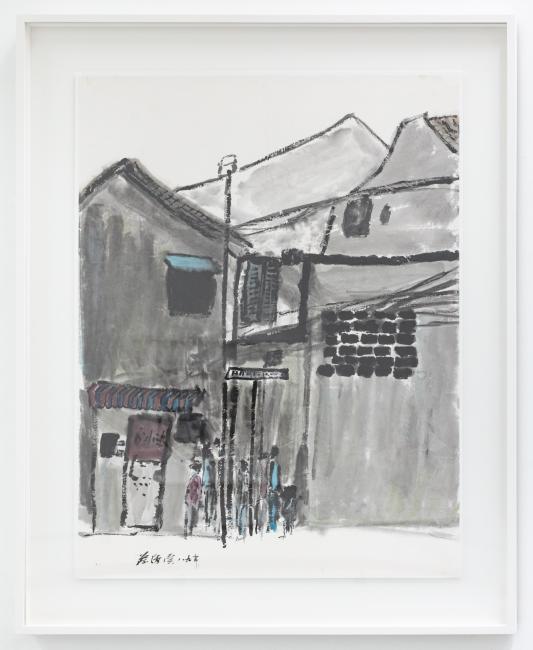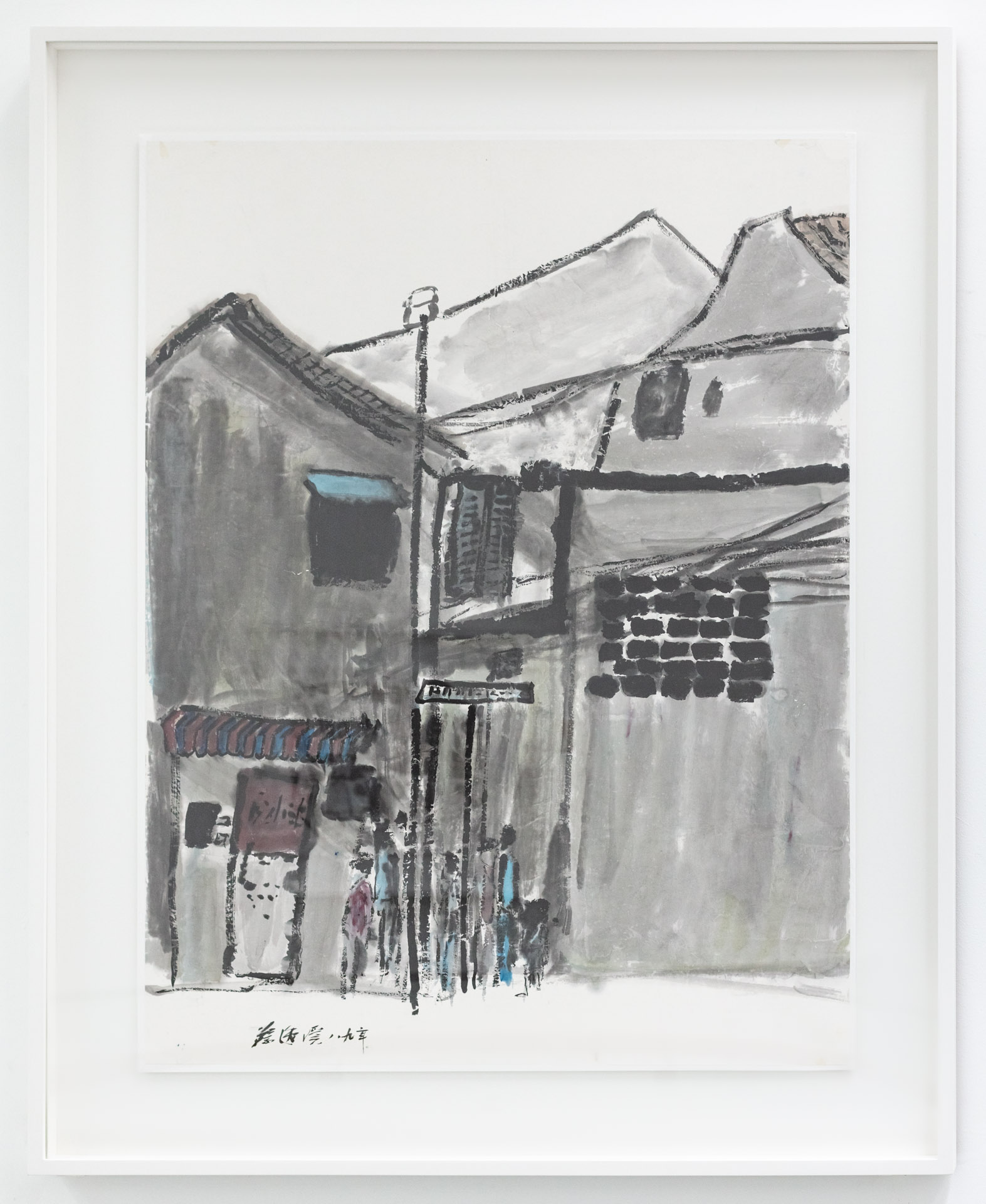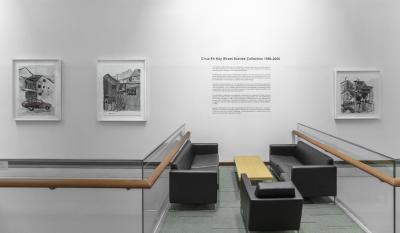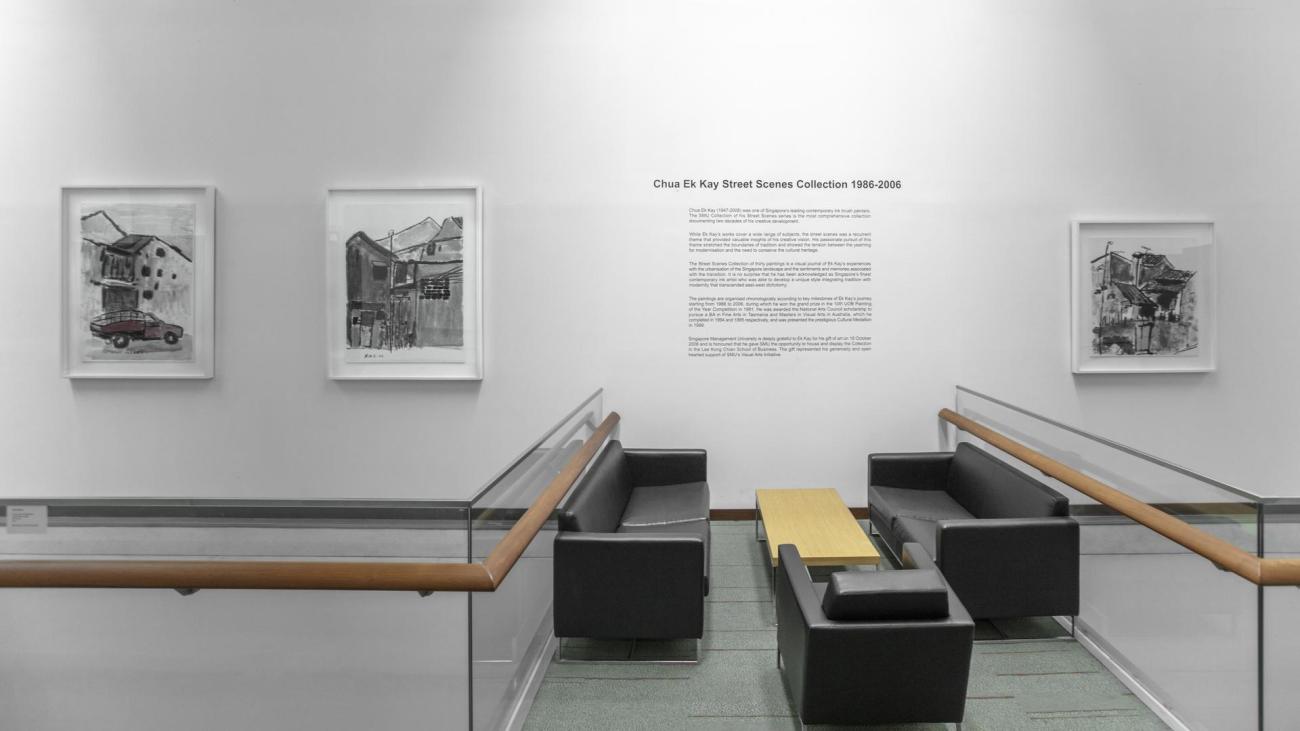Artwork Details
A Busy Corner on Middle Road
Credit Line: Gift of Artist 2006, Collection of SMU
This artwork is part of 25x25 Campus Art Tour.
Listen to the audio description of the artwork here.
Transcript:
In A Busy Corner on Middle Road, the scene in front of a longitudinal wall of a grey two-storey shophouse is congested with mundane details. These include a lamppost, a street sign, overhanging power cables, and a blue-and-maroon striped awning over a door that bears a signage. There is also the rare presence of a crowd of people, accented in the same blue and maroon, which is missing from Ek Kay's later works.
The thick grey applied in heavy washes gives the building substance and a firm presence. Indeed, in this painting, Ek Kay demonstrates an interest in capturing the architectural details realistically, marking in clean contained shapes and lines: the windows, shutters and air vents along the wall. In recording the details, he renders locations recognisable—though it is a fragile recognition which might disappear with Singapore's continual urban redevelopment.
--
Chua Ek Kay (1947-2008) was one of Singapore's leading contemporary Chinese ink painters. Born in China, Chua came to Singapore with his family in the 1950s. Here he studied Chinese ink painting under Fan Chang Tien. In 1991, he was the first Chinese ink painter to win the United Overseas Bank Painting of the Year Award. He later took up formal training in contemporary art, receiving a Bachelor of Fine Arts from the University of Tasmania in 1994 and a Master of Arts (Honours) in Visual Arts from the University of Western Sydney in 1995. He was awarded the Cultural Medallion in 1999.
This artwork is from the Street Scenes Collection, a suite of 30 paintings donated by the artist in 2006 and currently housed at Lee Kong Chian School of Business. The Street Scenes Collection spans two decades of Chua's artistic practice, from 1986 to 2006, and pictures narrow alleyways, temples of worship, old shophouses and historic sites in Singapore, Kathmandu, Yogyakarta and Jiangnan. In later years, he was keener on evoking feelings rather than rendering actual physical architecture. Particularly, his depictions of Singapore city streets—from Little India to Ann Siang Hill—are suffused with feelings of melancholy as he captures history passing through the once-familiar streets he has seen grown, thrived, and waned over time.



